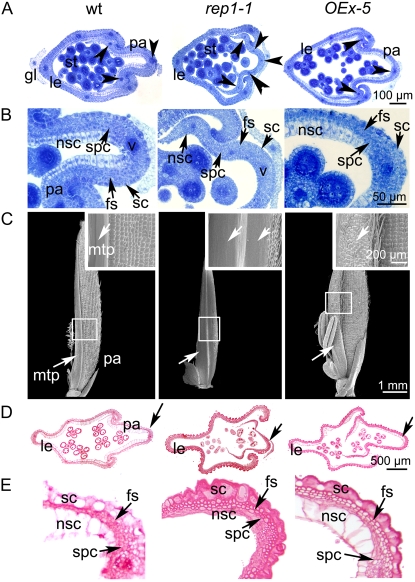Figure 2.
Observation of the cellular changes of wild type, rep1-1, and OEx-5. A, Flower transverse sections of wild-type, rep1-1, and OEx-5 transgenic plants at stage Sp 8. Note that five vascular bundles form in the rep1-1 palea (arrowheads) as opposed to three in wild type. B, Close-up of A, showing palea cell features. Note that four types of cell identity can be observed in the wild-type palea (i.e. sc, fs, spc, and nsc). Compared to that of wild type, the nsc cell size is smaller in the rep1-1 palea and bigger in the OEx-5 transgenic plant palea. C, SEM observation of the paleas of wild type, rep1-1, and OEx-5 at stage In 8. Insets are close-ups of C, marked in squares; note that the palea cell differentiation process is blocked in the rep1-1 mutant, while the mtp cells overdifferentiate in the OEx-5 transgenic plant. D, Flower transverse sections of wild-type, rep1-1, and OEx-5 transgenic plants around stage In 8. E, A close-up of D marked by arrows. Note that the palea cells seem smaller and underdifferentiated in rep1-1 compared to that of wild type, whereas cells differentiated fully in OEx-5. Abbreviations not defined in text: gl, empty glume; le, lemma; pa, palea; st, stamen; v, vascular bundle.

